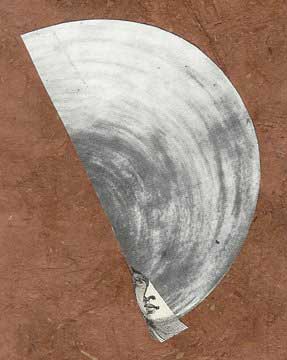“I believe that truth has only one face: that of a violent contradiction.”
– Georges Bataille

A myth can be a one-dimensional rationalization that follows from prejudices. “There are two pathologies. One is interpreting myth as pseudo-science, as though it had to do with directing nature instead of putting you in accord with nature, and the other is the political interpretation of myths to the advantage of one group within a society, or one society within a group of nations.”1 Among the challenges myths are for us is that they frequently have some truth to them, making it hard to recognize how something is actually a myth.
For instance, the certainty that crime is genetic is a myth. This is the justification made when affirming that there’s an obvious correlation between genes and behavior.2 Quite a dangerous myth as it encourages believing that – for example – higher crime rates are a given among those with certain ethnic, cultural, racial characteristics or physicalities.
“…If you look across the USA you can see that there are patterns of racial difference, such as income inequalities, health disparities, differences in academic achievement and representation in professional sports. If one thinks that these patterns of racial differences have a biological basis, if we see them as “natural,” racial inequality becomes just part of the human experience […]. This myth influences people to see racism and inequality not as the products of economic, social, and political histories but more as a natural state of affairs.”3 Nevertheless, crime – like every human behavior – is not restricted to any one ethnic, cultural, racial characteristics or physicality.

A different myth that tries to elucidate the character of crime does so by emphasizing that the majority of crimes are done to people. The data proves – nonetheless – that it is related to material goods that the majority of crimes are carried upon; and that – actually – crime is not on the rise as many conclude (another myth).4
Why then are these myths accepted as truth by some? Mainly due to the media highlighting what they think their spectators will give the most attention to. Consider how “entertainment crime narratives encourage three ideologically loaded notions:
- Offenders are professional criminals-clever, clear-headed, and motivated by unadulterated greed.
- The interests of public safety and justice are ill served by liberal judges and lawyers who are-sometimes to the point of absurdity-preoccupied with the rights of defendants.
- Hard-working, dedicated cops are out there every day doing their best in the face of these difficult challenges.”5
This takes us to another myth – another one of many. If only certain types of crimes are reported by the media, then there is the mistaken impression that the rates of these reported crimes are rising; not having to do with how the data is gathered and disseminated.6
Now, there are crimes that have innumerable victims but are not widely confronted as the social problem they are. For instance, white-collar unnamed crimes are those which cause unaccounted social harm. White-collar crime isn’t as dramatic and clear-cut as violent crime, but its impact is much larger.7 “But then, it was part of the overseer’s job to be hated and feared while the master kept his hands clean.”8

LINKS:
1. The Way of the Myth: Talking with Joseph Campbell
2. Gene Worship: Moving Beyond the Nature/Nurture Debate Over Genes, Brain and Gender
3. Busting the myth of biological race
4. Majority of Americans Misperceive Crime Trends
5. Crime in the Media
6. Ibid.
7. Why white collar criminals often get away
8. Octavia Butler. Kindred.
Merlene Castillo says
Well said Ms. Ortega I strongly agree with you on this article. I look for ward to your articles. Good job.